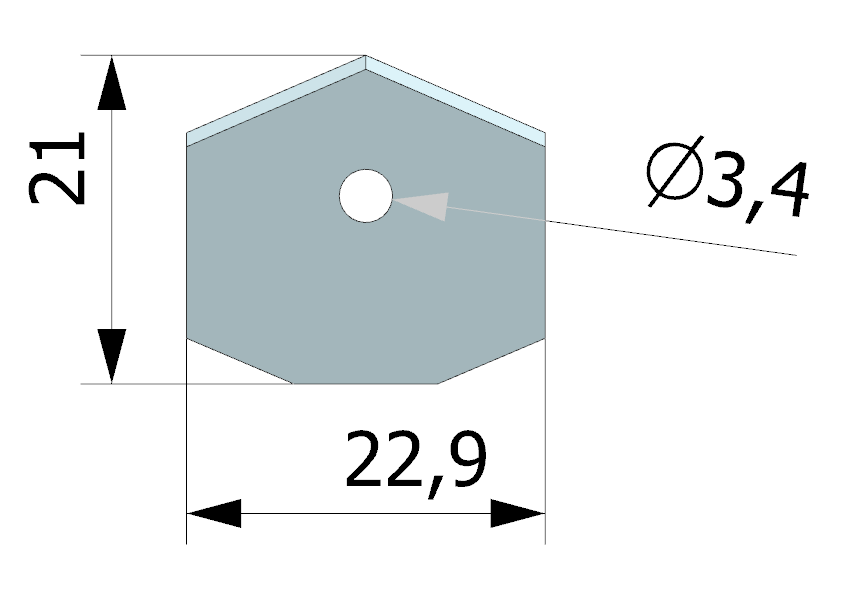Tailor-made cutting tools
Tailor-Made Cutting Tools: Precision Solutions for Every Cutting Need
Introduction: Tailor-made cutting tools represent the epitome of precision engineering, offering bespoke solutions meticulously crafted to meet the specific requirements of diverse industries and applications. In this comprehensive discourse, we embark on a journey through the realm of tailor-made cutting tools, uncovering the intricacies of the design process, innovative technologies employed, and the myriad of applications where tailor-made tools excel.
Section 1: Understanding Tailor-Made Cutting Tools Tailor-made cutting tools stand at the forefront of precision machining, empowering manufacturers to optimize cutting processes and enhance productivity. This section provides an overarching understanding of tailor-made cutting tools, emphasizing their pivotal role in delivering unparalleled precision, efficiency, and performance.
Section 2: The Science of Cutting Tool Design At the core of tailor-made cutting tools lies the science of design, where engineers meticulously analyze factors such as material properties, cutting dynamics, and tool geometry to optimize tool performance. This section delves into the scientific principles underpinning cutting tool design, highlighting the importance of accuracy, rigidity, and tool life in achieving superior cutting results.
Section 3: Material Selection and Optimization Material selection is a critical aspect of tailor-made cutting tools, with different materials offering unique properties suited to specific cutting applications. This section explores the diverse range of materials used in cutting tool manufacturing, including high-speed steel, carbide, ceramic, and polycrystalline diamond (PCD), and the optimization strategies employed to enhance tool performance, durability, and wear resistance.
Section 4: Precision Manufacturing Techniques Precision manufacturing techniques are imperative in tailor-made cutting tool production to ensure the highest level of accuracy, consistency, and quality. This section delves into the various manufacturing processes employed, including CNC grinding, EDM (Electrical Discharge Machining), laser cutting, and coating application, each meticulously tailored to the specific requirements of the cutting tool design and material composition.
Section 5: Applications Across Industries Tailor-made cutting tools find applications across a wide spectrum of industries and activities, each with its unique set of cutting challenges and requirements. This section highlights some of the key industries that rely on tailor-made cutting tools, including aerospace, automotive, medical, electronics, and precision engineering, where bespoke solutions revolutionize machining processes and elevate production standards.
Section 6: Innovations Driving Tailor-Made Cutting Tools The landscape of tailor-made cutting tools is characterized by continuous innovation, driven by advancements in materials science, manufacturing technologies, and design methodologies. This section explores some of the latest innovations in cutting tool design and production, including the use of advanced coatings, geometric optimizations, and predictive modeling techniques, pushing the boundaries of precision machining and productivity.
Section 7: Collaboration and Customization Successful tailor-made cutting tool development requires close collaboration between tool manufacturers and end-users to ensure that the final product meets the specific requirements and performance expectations. This section elucidates the collaborative dynamics involved in cutting tool customization, from initial consultations and design iterations to prototype testing and validation, emphasizing the importance of communication and feedback throughout the development process.
Section 8: Quality Assurance and Testing Quality assurance is paramount in tailor-made cutting tool production, with rigorous testing protocols employed to validate performance, reliability, and tool life. This section explores the testing procedures used to evaluate cutting tool performance, including cutting tests, dimensional inspections, and metallurgical analyses, ensuring that each tool meets the highest standards of quality and durability.
Section 9: Sustainability and Environmental Responsibility In an era of increasing environmental awareness, sustainability and environmental responsibility are becoming key considerations in cutting tool manufacturing. This section examines some of the sustainable practices and initiatives being adopted by manufacturers to minimize waste, reduce energy consumption, and promote recycling and reuse, contributing to a greener and more sustainable future for the machining industry.
Section 10: Global Market Dynamics The global market for tailor-made cutting tools is characterized by dynamic growth, driven by increasing demand for customized solutions that offer superior performance and efficiency. This section explores some of the key market trends and dynamics shaping the industry, including emerging opportunities in regions such as Asia-Pacific, Latin America, and the Middle East, and the impact of digitalization and automation on the future of cutting tool manufacturing.
Section 11: Conclusion and Outlook In conclusion, tailor-made cutting tools play a vital role in driving innovation, efficiency, and productivity across a wide range of industries and applications. As technology continues to advance and market demands evolve, the future of tailor-made cutting tools is bright, with endless opportunities for innovation, customization, and performance optimization. Let us continue to embrace collaboration, innovation, and sustainability as we strive to create a future where tailor-made cutting tools set the standard for precision machining and production excellence.
 Tailor-made cutting tools
Tailor-made cutting tools